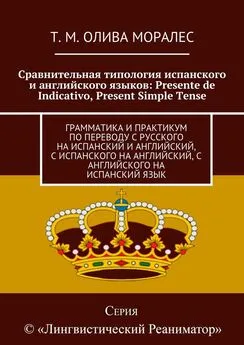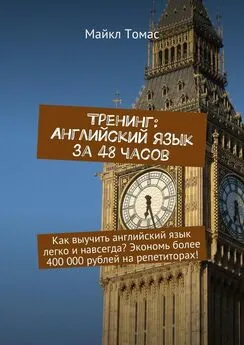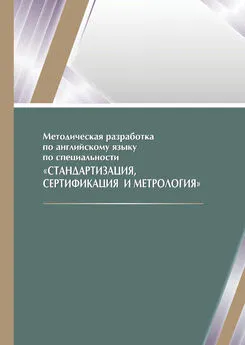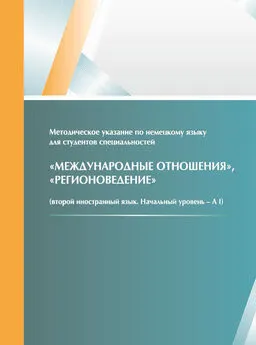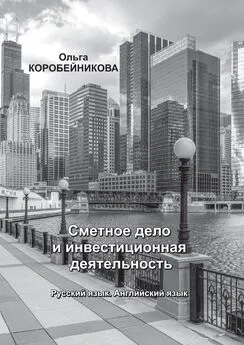Ольга Кравцова - Английский язык для специальных и академических целей: Международные отношения и зарубежное регионоведение. Часть 1
- Название:Английский язык для специальных и академических целей: Международные отношения и зарубежное регионоведение. Часть 1
- Автор:
- Жанр:
- Издательство:МГИМО-Университет
- Год:2015
- ISBN:978-5-9228-1210-8
- Рейтинг:
- Избранное:Добавить в избранное
-
Отзывы:
-
Ваша оценка:
Ольга Кравцова - Английский язык для специальных и академических целей: Международные отношения и зарубежное регионоведение. Часть 1 краткое содержание
Адресовано студентам четвертого курса факультетов и отделений международных отношений и зарубежного регионоведения.
Английский язык для специальных и академических целей: Международные отношения и зарубежное регионоведение. Часть 1 - читать онлайн бесплатно полную версию (весь текст целиком)
Интервал:
Закладка:
However, in the end, a convergence of interests between Russia and the U.S. emerged. As Obama faced the prospect of being compelled to intervene militarily — an extremely unattractive prospect — Russia offered a way out; securing the commitment of the Syrian regime to dismantle all of its chemical weapons.
Having engineered this diplomatic coup, Russia then made sure it was true to its word and, a year later, almost all of Syria's chemical weapons have been destroyed. The Russian leadership was also careful not to use this diplomatic gain to ‘humiliate' the U.S. This restraint meant that there was a chance that this could have been the foundation for a pragmatic improvement in relations between the two countries.
The crisis in Ukraine extinguished any such hopes. Hawks on both sides have heralded a return to Cold War confrontation and zero-sum competition. Both countries have seen in Ukraine the crossing of ‘red lines' that cannot be accepted.
The red line for Russia was the move toward the U.S. and the imposition of a pro-Western ‘democracy' in a country directly neighboring Russia. For the U.S., the Russian annexation of Crimea undermined the post-Cold War European agreement to respect the new European territorial boundaries.
The Reader
The question is, thus, whether the current state of U.S.-Russian relations is at such a depressed and destructive level that no real cooperation is possible, even in other less politically contested regions of the world. Clearly, the answer to this question depends significantly on what happens in Ukraine.
The resolve to impose a cease-fire on the pro-Russian rebels in Ukraine suggests that President Vladimir Putin might not see escalation as the only way to resolve the crisis in Ukraine in Russia's favor. The historic record of Putin's period at the apex of Russian power has been a pattern of oscillation between an ambition for improving relations with the West and a subsequent disillusionment and deterioration in such relations, leading again to an attempted renewal or ‘resetting' of those relations.
It cannot be excluded that the cycles might move again and U.S.-Russian relations will start to be mended by the cease-fire in Ukraine.
In this scenario, the Middle East actually offers many areas for mutual cooperation. It is not like the Cold War period when the U.S. and Soviet Union ritualistically supported different camps in the region.
Nowadays, the U.S. and Russia have a common strategic interest in combatting international terrorism, the reason being that this represents a serious threats to the citizens of both countries, as seen in the recent threats from IS to Russia following those to the U.S.
While the US suffered from the terrorist attacks of 9/11, Russia has had to endure numerous terrorist attacks, mainly emanating from the Islamist insurgency in the North Caucasus. For both countries, there is a shared sense of the gravity of the threat of international terrorism to their core national interests.
For these reasons, the U.S. and Russia view IS as a common enemy. As the apocalyptic language emanating out of Washington demonstrates, the U.S. actually views the threat from IS as strategically more important than that of Ukraine in the sense that direct national interests are involved.
For the American public, Ukraine appears as an obscure conflict in a distant land, while the execution of American journalist James Foley by IS has a shocking immediacy. If the conflict in Iraq and Syria escalates, and the U.S. becomes more involved, it might very well be that the Ukrainian conflict becomes marginalized. And any Russian support in the battle against IS, undoubtedly of a more indirect nature, would be welcomed by Washington.
If one looks at the Middle East more broadly, Russian and U.S. interests are actually closer than often suggested. Although there has been continued disagreement about Iran, both Russia and the U.S. are committed to seeing that Iran does not obtain nuclear weapons and the U.S. posture toward Iran has moved closer to that of Russia.
With the escalation of the crisis in Iraq, Russia can potentially play an important role in facilitating the coordination between Iran, the Iraqi government and Syria, which will be critical if IS is to be defeated.
Russia is also no longer the unconditional supporter for radical forces in the Middle East. Russia's major economic partners in the region are Turkey and Israel, and the economic and cultural links between Russia and Israel have never been stronger.
In fact, it could be argued that it is Russia which is the more conservative force supporting the regional status quo, while it is the U.S. which is the more radical actor seeking to overturn the regional order. Obama's much more realist and non-interventionist convictions actually represent a shift toward the Russian position.
There is, therefore, considerable potential for Russia and the U.S. to work together in the Middle East. However, this is clearly conditional on no further escalation in Ukraine. In that context, the likelihood is for conflict and confrontation to extend to other parts of the world, including the Middle East, even when in practice there is such mutual interest for cooperation.
The Reader
Roland Dannreuther is professor of International Relations at the University of Westminster, London.
http://www.ecfr.eu/page/-/ECFR43_REINVENTION_OF_EUROPE_ESSAY_AW1.pdf
Mark Leonard 63 63 Mark Leonard is Co-Founder and Director of the European Council on Foreign Relations, the first panEuropean think-tank.
November 2011
Looming behind the euro crisis is a larger and more fundamental challenge: the near-collapse of the EU's political system. The markets have now forced Silvio Berlusconi and George Papandreou out of office, and their impatience with the slow pace of decision-making has moved the crisis from the periphery to the core economies of the eurozone. While the traders rage, European leaders have been inching towards agreement on the steps that are needed to save the euro. But while they see the need for “more Europe”, they do not know how to persuade their citizens, markets, parliaments or courts to accept it. This is the root of Europe's political crisis: the necessity and impossibility of integration.
The economic necessity is easy to grasp. In order to deal with the imbalances in the eurozone that led to insolvent banks, excessive sovereign debt and real estate bubbles, there is a growing consensus that the single currency area needs greater integration. Many people are now calling for fiscal union to be complemented by economic and even political union. There is still disagreement among member states about the details, but most economists point to five key elements: a quasi-finance ministry to set and enforce fiscal rules; the ability to raise its own resources; common banking supervision, regulation and deposit insurance; common representation in international institutions; and a mechanism for ensuring the democratic legitimacy of these processes.
However, what is economically necessary is politically impossible. The steps needed to save the euro could be blocked by any one of a number of forces: a taxpayers' revolt in creditor nations such as Germany, Finland, the Netherlands and Slovakia; a revolt against austerity in debtor countries such as Ireland or even France; the rulings of judiciaries such as the German Constitutional Court; or the collapse of markets or re-grading of rating agencies. Meanwhile, a weakened David Cameron has promised his Eurosceptic backbenchers that he will make British support for any treaty change contingent on a renegotiation of British membership of the EU.
While elites across Europe are aware of these dangers and are generally committed to finding a European-level solution, they continue to see the root causes of the crisis differently in different countries. Because leaders have been slow to accept the legitimacy of other countries' concerns and positions, the EU still lacks a deep-seated consensus on what needs to be done that both creditor and debtor countries can support. The lack of a common understanding of the causes and responsibility for the crisis has made it harder for the eurozone countries and the EU to get ahead of the crisis and persuade markets that they are really prepared to do what it will take to stop the contagion.
The Reader
In fact, the crisis is driving European countries even further apart and creating a perception of a “European ‘clash of civilizations'”. In particular, three blocs are emerging within Europe: a Germanic bloc that wants austerity and rules, a Latin bloc that wants growth, and an Anglo-Saxon tendency that wants to loosen ties with the EU altogether. Of course, these blocs are based on hypocrisy and misinformation: for example, the country that broke the Stability and Growth Pact most dramatically was Germany; Spain met all of the Maastricht criteria well into the crisis; and Italians have very low levels of personal debt. Nevertheless, based on these perceptions, northern creditors are resisting a “transfer union”; Eastern Europeans are insisting that others should accept painful reforms as they did; and debtors are resisting the austerity measures that are being imposed on them.
Thus European leaders find themselves caught between global markets that have lost patience with multilateral decision-making on the one hand and voters who have lost patience with globalisation on the other. As they explore various different scenarios to integrate the Eurozone, they are struggling to find a zone of the possible between these two extremes. Europe must develop institutional arrangements for a two-speed Europe that will strengthen rather than weaken Europe's ability to play a role in the world and to rethink Europe's political agenda to win back the consent of its citizens. Former British Foreign Secretary David Miliband has distinguished between two crises that Europe faces: an acute euro crisis, which requires Europe to strengthen its core; and a chronic crisis of a power transition to the east, which requires Europe to integrate its periphery. In solving the acute crisis, Europe must also avoid exacerbating the chronic crisis.
If the eurozone's core economic problem boils down to the creation of a common currency without a common treasury, its political dilemma lies in the development of common policymaking without a common politics. The EU was built at a time when citizens were deferential and relations between states were seen as being above politics. Thus shielded from the cut and thrust of political debate, national leaders had the space to pursue visionary foreign policies. But this “permissive consensus” began to erode with the signature of the Maastricht Treaty 20 years ago when the EU entered domestic politics. Since then, rather than developing a continental politics, European integration has been defined by two contradictory but mutually reinforcing forces that operate on both the European and national level: technocracy and populism.
On the one hand, the EU has been the ultimate technocratic sphere. It is true that European integration has been driven by larger-than-life politicians such as Schuman, Adenauer and De Gasperi at the beginning of the European project and Giscard and Schmidt and Kohl and Mitterrand later on.
But the EU's day-to-day agenda has always been driven by practical steps rather than grand political visions. The “Monnet method” named after the key architect of European integration, the French official Jean Monnet — was designed to generate a consensus among European diplomats for limited projects of practical cross-border integration. The idea was that each of these projects would lead to the integration of further policy areas — from Europe's single market to its foreign policy.
Читать дальшеИнтервал:
Закладка:


